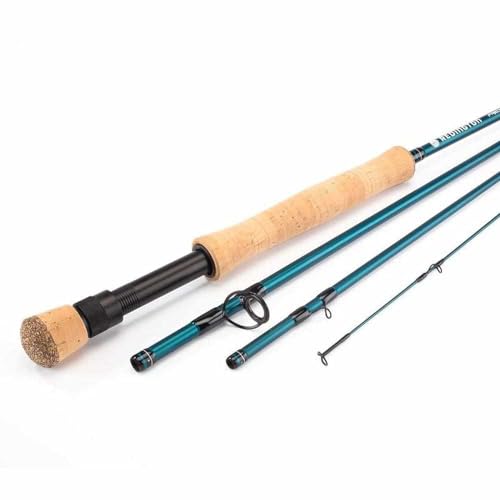Late Summer Fly Fishing Tips
Late summer fly fishing presents unique challenges and opportunities. As water temperatures rise and trout behavior shifts, anglers must adapt their strategies to maintain success. This guide offers eight expert tips to enhance your late summer trout fishing experience, from targeting cooler waters to selecting the right flies.
Late Summer Fly Fishing Strategies for Trout Success
1. Seek Cooler Waters
As summer progresses, water temperatures increase, prompting trout to seek cooler refuges. Focus on:
Deep Pools: These areas often remain cooler and provide shelter.
Shaded Sections: Overhanging vegetation and structures offer respite from the sun.
Tributary Inflows: Confluences where cooler streams enter can attract trout.
Understanding trout behavior in response to temperature changes is crucial for locating active fish.
Related: Fly Fishing Tips For Beginners
2. Fish During Cooler Periods
Trout are more active during the cooler parts of the day. Plan your fishing trips:
Early Morning: Insect activity increases, and water temperatures are lower.
Late Evening: As temperatures drop, trout become more willing to feed.
Avoid fishing during the hottest midday hours when trout are less active.
3. Utilize Terrestrial Patterns
Late summer is prime time for terrestrial insects. Effective patterns include:
Grasshoppers
Ants
Beetles
These insects often fall into the water, providing an easy meal for trout.
Related: What Are Foam Lines?
4. Nymph in Fast Water
Faster currents are more oxygenated, attracting trout. When nymphing:
Target Riffles and Runs: Trout hold in these areas for food and oxygen.
Use Weighted Nymphs: Ensure your flies reach the strike zone quickly.
This approach can be particularly effective during warmer periods.
5. Fish Dry Flies in Slow Water
In slower currents, trout have more time to inspect potential food. Tips:
Use Delicate Presentations: Minimize disturbances on the water surface.
Select Appropriate Patterns: Match the hatch with suitable dry flies.
This method is ideal during low-light conditions when trout are more surface-oriented.
6. Downsize Your Flies
As the season progresses, trout may become selective. Consider:
Smaller Fly Sizes: Sizes 16–22 can be more effective.
Lighter Tippets: Use 5X or 6X to reduce visibility.
Smaller presentations can entice wary trout in clear water conditions.
7. Explore High-Elevation Streams
Higher altitude waters remain cooler and can offer active trout. Benefits include:
Reduced Fishing Pressure: Less crowded areas provide better opportunities.
Scenic Environments: Enjoy the beauty of remote fishing locations.
Always check local regulations and access permissions before venturing into new areas.
8. Monitor Water Temperatures
Trout become stressed in warm water. Best practices:
Use a Thermometer: Regularly check water temperatures.
Avoid Fishing Above 68°F (20°C): High temperatures can be lethal to trout.
Practice Catch and Release Responsibly: Minimize handling and release fish promptly.
Being mindful of water conditions ensures the sustainability of trout populations.
Related: Reasons Why Fly Fishing is a Great Hobby For Women
FAQs
Why are trout less active during midday in late summer?
Higher water temperatures reduce oxygen levels, making trout lethargic and less inclined to feed.
What are the best times to fish during late summer?
Early mornings and late evenings offer cooler temperatures and increased trout activity.
Which fly patterns are effective in late summer?
Terrestrial patterns like grasshoppers, ants, and beetles, as well as small nymphs and dry flies, are productive.
How can I locate cooler water areas in a river?
Look for deep pools, shaded sections, and areas where cooler tributaries enter the main river.
Is it ethical to fish when water temperatures are high?
Fishing in high temperatures can stress trout. It's advisable to avoid fishing when water exceeds 68°F (20°C).
What gear adjustments should I make for late summer fishing?
Use lighter tippets (5X or 6X), smaller flies (sizes 16–22), and consider using a thermometer to monitor water temperatures.
Related: How To Fly Fish Responsibly During Trout Spawning Seasons
// Related Posts About Fly Fishing



















